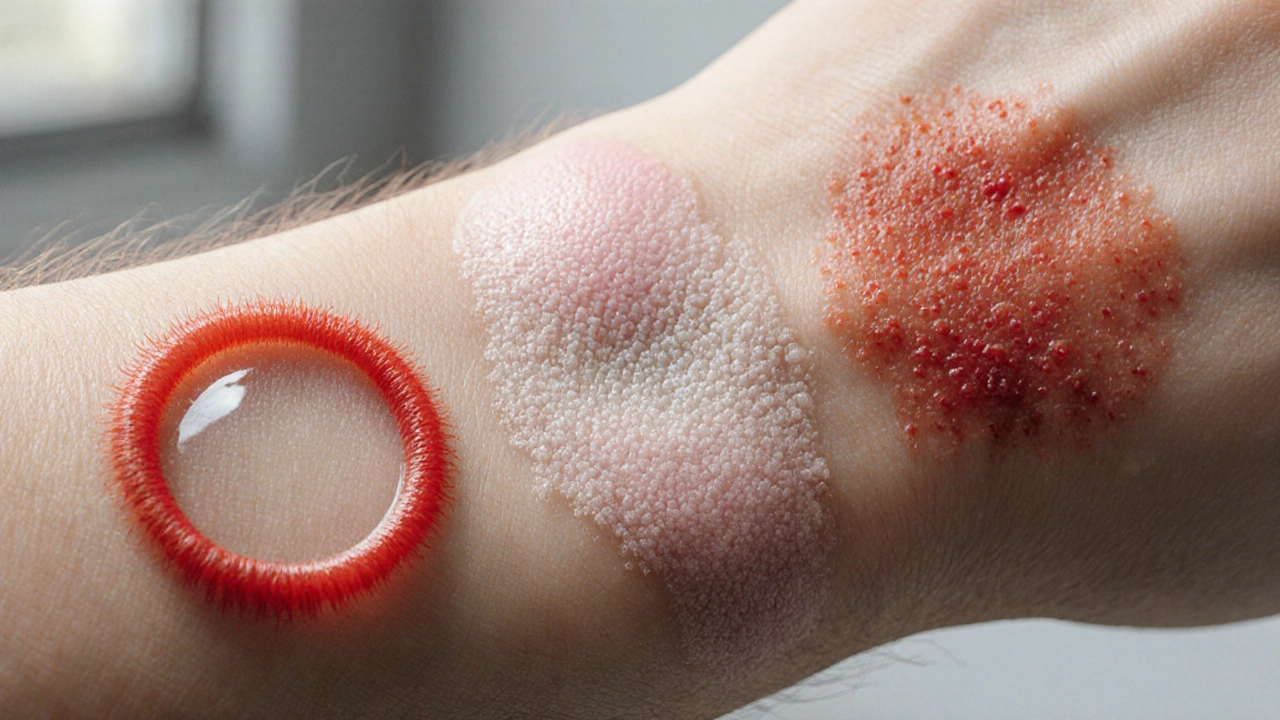Fungal Skin Discoloration: What It Is and How to Fix It
If you’ve noticed a patch of skin that looks darker, lighter, or just odd in color, a fungal infection could be the culprit. Fungal skin discoloration isn’t just a cosmetic issue – it can signal an underlying irritation that needs attention. Below, we break down why it happens, what to look for, and the easiest ways to clear it up.
Common Causes and Symptoms
Most cases start when a fungus, like Trichophyton or Malassezia, finds a moist, warm spot on your body. Common hotspots include the feet, groin, underarms, and any area that stays damp from sweating or swimming. When the fungus feeds, it can change the melanin in the skin, leading to lighter or darker patches.
Typical signs include:
- Irregularly shaped spots that are red, brown, or white.
- Itching or a mild burning feeling.
- Flaky or scaly skin around the discolored area.
- Sometimes a slight odor if the area stays wet.
If you see any of these, especially after a gym session or a beach day, a fungal cause is worth checking out.
Effective Treatment and Prevention
The good news is most fungal skin discoloration clears up with over‑the‑counter (OTC) antifungal creams or sprays. Look for active ingredients like clotrimazole, terbinafine, or miconazole. Apply twice a day for at least two weeks, even if the color looks better sooner – that stops the fungus from coming back.
For stubborn cases, a short course of oral antifungal pills (e.g., fluconazole) may be necessary. These are prescription meds, so talk to your doctor if OTC options don’t work after a week.
Home remedies can help alongside meds:
- Keep the area dry – use a talc‑free powder after washing.
- Apply diluted tea tree oil (a few drops in a carrier oil) once daily.
- Soak the skin in an oatmeal bath to reduce itching.
Prevention is mostly about hygiene:
- Dry yourself thoroughly after showering, especially between toes and groin folds.
- Wear breathable fabrics; swap out synthetic socks for cotton.
- Avoid sharing towels, shoes, or razors.
- Disinfect gym mats and shower floors with an antifungal spray.
If the spots spread, become painful, or don’t improve within two weeks of treatment, schedule a visit with a dermatologist. They can take a skin scraping to confirm the fungus and prescribe a stronger regimen if needed.
Bottom line: fungal skin discoloration is common, treatable, and mostly preventable with good skin care habits. Spot the early signs, act fast with an OTC antifungal, and keep the area dry – you’ll likely see the color return to normal in a few weeks.

Fungal Skin Discoloration: Signs You Need a Dermatologist
Learn how to recognize fungal skin discoloration, when a dermatologist is needed, and effective self‑care tips to stop the infection.